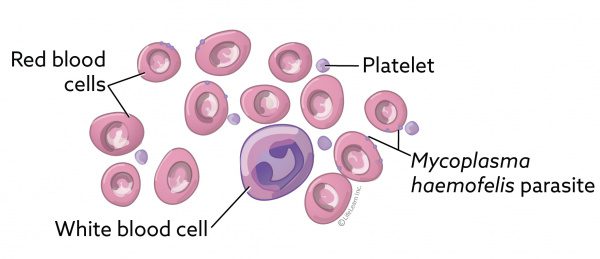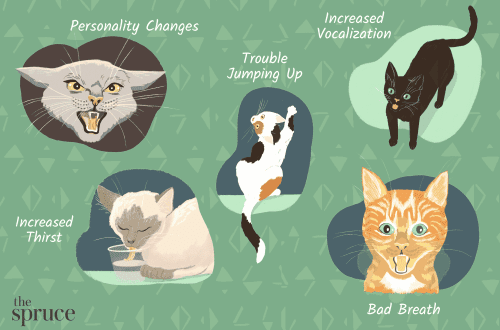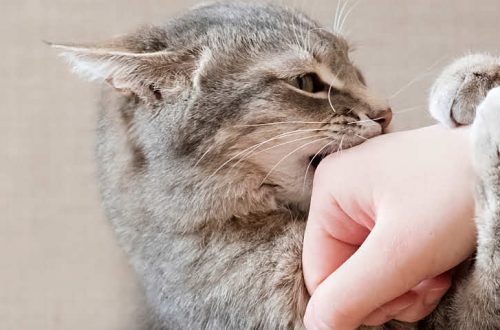
Hemobartonellosis hauv miv: cov tsos mob thiab kev kho mob
Has your purring friend become lethargic and lost his appetite? Is he breathing fast, and is his heart beating like it’s about to jump out of his chest? One of the possible causes of this condition is hemobartonellosis.
txheem
Hemobartonellosis in cats: what is it
Hemobartonellosis, also known as hemoplasmosis or infectious anemia, is a fairly common infectious disease. It develops due to the parasites Mycoplasma haemofilis and Mycoplasma haemominutum. These small microorganisms attach to the membranes of erythrocytes, red blood cells, damage them, settle in the resulting recesses and begin to multiply, causing irreversible cell damage. And subsequently anemia – a decrease in the number of red blood cells.
According to 2001 data, hemobartonellosis occurs in more than 18% of cats, that is, almost every fifth. And the older the pet, the more likely it is to get sick. At the same time, in 75% of cases, hemoplasmosis occurs latently, without any clinical manifestations – animals are simply asymptomatic carriers of the infection. In this regard, cats, in a sense, are more lucky than cats: clinical symptoms in the latter appear much more often.
Ua rau muaj tus kabmob
How do these Mycoplasma haemofilis and Mycoplasma haemominutum get into the body of caudates? Not without the help of blood-sucking parasites – fleas, zuam, possibly mosquitoes. And also when interacting with already sick animals. A sick cat has bitten or scratched a healthy cat – now they are both infected.
For this reason, street cats, who often have to be in fights, get sick more often than pets. Another possible way of infection is the transfusion of infected blood.
Hemobartonellosis often manifests itself against the background of weakened immunity – due to other diseases, stress, injuries.
Symptoms of hemobartonellosis
The main signs of the disease are associated with anemia and are not specific, therefore, even a specialist cannot diagnose hemoplasmosis only by them. A pet infected with infectious anemia may experience:
- pallor or yellowing of the mucosa;
- fever; rapid breathing (tachypnea);
- plawv dhia ceev (tachycardia);
- kev nkees;
- tsis qab los noj mov;
- tso zis tsaus.
The incubation period lasts from 2 to 21 days, so the first symptoms of the disease do not appear immediately. Hemobartonellosis can occur both in mild form, when its signs are almost invisible, and in severe form. A severe form without suitable treatment can lead to death.
Cov txheej txheem ntawm kev kuaj mob
After collecting anamnesis, the doctor prescribes General ntshav tsom xam, urinalysis and other studies to assess the general condition of the cat and better understand what could lead to the development of the disease. As well as testing for feline leukemia virus (FeLV) and tus kab mob feline immunodeficiency virus (FIV), since these diseases are often found in animals infected with hemobartonellosis.
To make an accurate diagnosis, it is necessary to identify pathogenic microorganisms in the erythrocytes of a cat. For this apply:
- Light microscopy of stained blood smears. This is not the most accurate method, because the result may be negative simply because the blood was taken during a period when there are very few parasites in the blood.
- PCR to detect parasite DNA. This is a more accurate method that confirms the presence of microorganisms in the blood.
Based on the results of the tests, the specialist prescribes the appropriate therapy.
Treatment of infectious anemia in cats
The course of treatment depends on the condition of the animal, concomitant diseases and other factors. It may include:
- taking tetracycline antibiotics (doxycycline, oxytetracycline, etc.), antiallergic drugs, vitamin complexes;
- noj zaub mov tshwj xeeb;
- kev kho tshuaj hormone;
- blood transfusion (hemotransfusion) and other measures.
All drugs, dosages and methods of treatment are determined by the attending veterinarian.
Qhov tshwm sim ntawm tus kab mob
Up to 75% of cats in which hemobartonellosis is the main disease recover largely due to competent and timely treatment. In this case, animals become carriers of infection for a long time. In some, albeit very rare, cases, recurrence is possible.
kev tiv thaiv kabmob
It is much easier to prevent a disease than to treat it later. For this you need:
- regularly treat the pet from ectoparasites;
- ua raws li lub sijhawm txhaj tshuaj tiv thaiv;
- if possible, avoid contact with street animals;
- make sure that the food is complete and balanced;
- ntxiv dag zog rau lub cev tiv thaiv kab mob.
Let the tailed pet be healthy, and this article on hemobartonellosis in cats, symptoms and treatment of the disease is useful for educational purposes only. If the pet shows signs of illness, you do not need to diagnose via the Internet – it is better to contact a specialist as soon as possible.
Saib kuj:
- Cov tsos mob thiab kev kho mob ntawm mycoplasmosis hauv miv
- Leukemia hauv miv - cov tsos mob ntawm tus kab mob thiab kev kho mob
- Kitten diseases – symptoms and treatment





